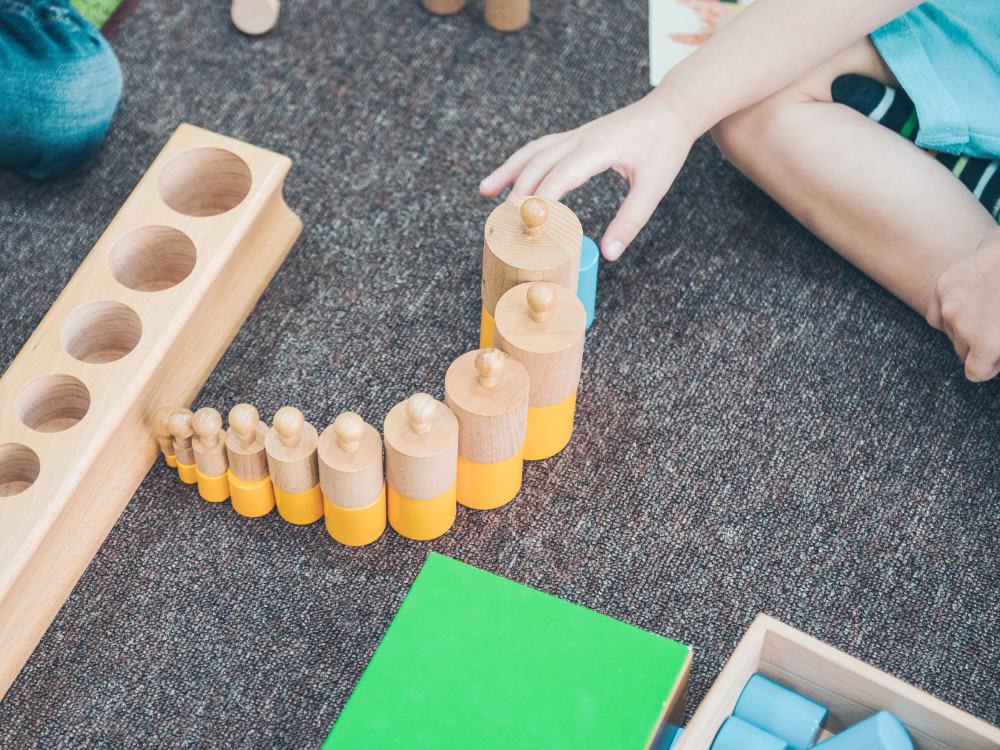Why Montessori Is Bad
A Montessori is an educational method that focuses on self-directed, independent learning and collaborative playing of children.
Montessori education gets its worldwide popularity for its child-centered approach. However, it is recommended to deeply observe any educational concept, including Montessori, to know its possible limitations and challenges.

Here, we will shed light on some of the factors why Montessori is bad or some drawbacks of Montessori education.
Limited Emphasis on Traditional Academic Skills
One factor in enlightening the fact “why Montessori is bad is “its limited focus on traditional academic skills such as reading, writing, and mathematics.

The absence of structured instruction may lead to knowledge gaps and hinder future academic progress. The self-directed nature of Montessori classrooms may only work for some children’s learning behavior, and some may need more specific guidance to develop basic skills.
Lack of Standardized Assessment
Montessori education heavily relies upon qualitative observations and individualized assessments despite standardized testing. This point of view may align with the philosophy of developing each child’s unique abilities. Still, it faces challenges in evaluating and comparing a child’s progress to standardized benchmarks.
Many believe that other than standardized assessments, it becomes difficult to test a child’s academic qualities objectively and provide proper support when needed. This thing also explains some people thought why Montessori was bad. In a highly competitive academic environment, this can put Montessori graduates at a disadvantage when transitioning to traditional educational systems.
Limited Socialization Opportunities
Another aspect of why Montessori is bad is that in this type of education, Montessori classrooms are of mixed-age groups, where older children mentor younger ones.
It can promote collaboration and empathy, but it may not be able to prepare children for social interactions with children of their age group.
People often believe that the absence of a traditional hierarchical classroom structure and limited exposure to age-relevant peer interactions may affect the development of basic social skills.
So, in the future of other education fields and in professional environments where people of the same age work together, Montessori students may face challenges adapting to those conventional environments.
Potential for Inconsistent Teacher Training
The Montessori philosophy emphasizes the teacher as a facilitator rather than an instructor. However, if there is a need for standardized teacher training programs, it can result in consistent implementation of the Montessori method in different schools.
This error may lead to variations in the quality of education provided, potentially compromising the procedure’s effectiveness. Without strict supervision and authorization processes, the Montessori system may fall short in ensuring the ability and expertise of its educators.
Not Easily Accessible and Expensive
Another reason why Montessori is bad is that these schools do not have a large no. of students. Thus, it means that it has high costs per student to pay for the staff members working at the school.
Montessori equipment is also very expensive because High- standard quality materials required for all ages must be purchased and maintained in schools.
Also, Montessori schools are not easily accessible compared to those traditional schools. In this case, parents must move to those societies where this educational institute exists.
At a point where we cannot deny the Montessori educational strengths, it is significant to acknowledge its restrictions to make well-informed decisions regarding its suitability for individual children. The emphasis on independence and self-directed learning may not correspond with every child’s learning approach or enough to prepare them for traditional academic environments.
Moreover, the absence of standardized assessments and potential gaps in basic skills can present challenges in later stages of education. It is required to consider a comprehensive method of education that combines the best elements of different ideologies to meet the various needs of students in today’s speedily changing world.

